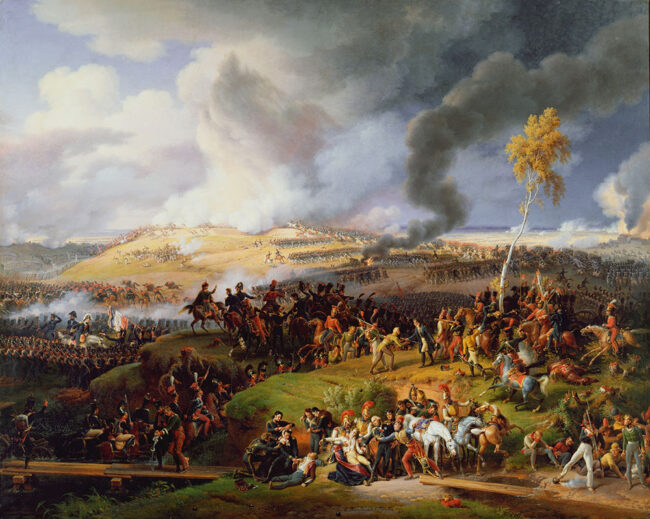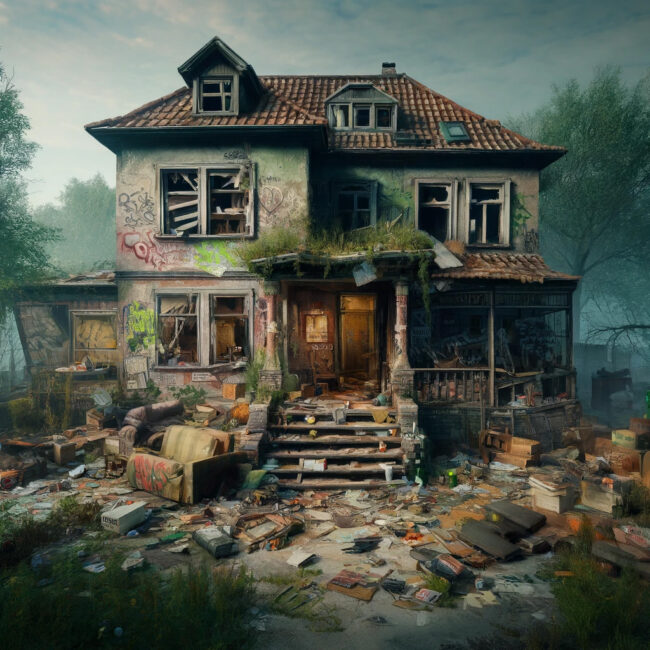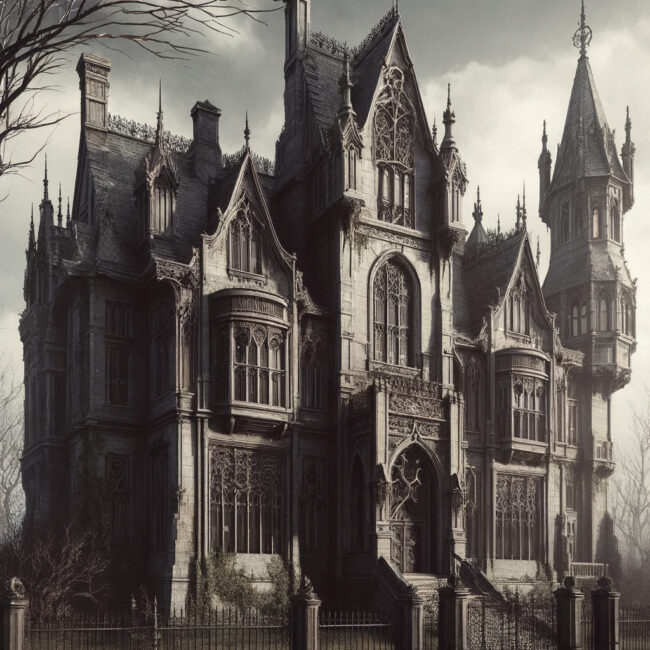What Is Literary Fiction Anyway?
I love to read good literary fiction, and I try to write it too. But if I’m asked to define literary fiction, I struggle to come up with a precise answer. So I thought I’d write this post to try to clarify what literary fiction is, what it isn’t, and how we can recognise its main components when we see them.
Literary Fiction vs. Genre Fiction?
Literary fiction is often defined in contrast to genre fiction, but I don’t think that’s accurate or helpful. The idea seems to be that fiction is divided into genres like thrillers, romance, crime, and sci-fi, and anything that doesn’t fit neatly into one of those buckets is dumped into an extra bucket marked “literary fiction”.
I disagree with this distinction for a couple of reasons.
Firstly, there’s a lot of overlap: literary fiction can fit into a genre, and genre fiction can be literary. For example, Kazuo Ishiguro is a Nobel-Prize-winning author of literary fiction, but I’ve read a couple of novels by him, Never Let Me Go and Klara and the Sun, that seem to me to be both science fiction and literary fiction. I’ve also read plenty of literary crime novels, like Tail of the Blue Bird by Nii Ayikwei Parkes and An Isolated Incident by Emily Maguire.
Secondly, it has become tainted by arguments about elitism, with the implication traditionally being that literary fiction is better and more worthy than genre fiction, which leads fans of genre fiction quite rightly to fight back. That’s not a battle that I’m interested in fighting here. It doesn’t seem to go anywhere, and it certainly won’t help us achieve a clear definition.
Thirdly, this way of looking at literary fiction doesn’t get us any closer to a useful definition of what it really is. Just saying it’s “not genre fiction” is like defining an elephant by saying it’s not a dog. It’s vague and imprecise, and I think we can do better.

Literary Fiction Defies Conventions
There is a grain of truth in the “literary fiction vs. genre fiction” divide. What’s true, I think, is that literary fiction tends to defy the conventions of a particular genre. In fact, it often defies conventions altogether.
For example, John Banville writes both literary fiction and crime novels. In his case, it’s very clear to see the difference between the two—so clear, in fact, that he used to publish his crime fiction under the pseudonym of Benjamin Black.
Banville’s crime novel Snow, for example, is a formulaic police procedural. It dutifully follows the conventions of the genre, and there’s nothing surprising about it. So although he’s primarily known as a literary fiction writer, I wouldn’t call Snow a “literary crime” novel. It’s genre fiction.
The two examples I mentioned in the previous section, on the other hand, overturn the reader’s expectations by refusing to provide a neat resolution and by bringing in different themes like the clash between traditional and modern Ghanaian culture in Tail of the Blue Bird and the pervasiveness of violence against women in An Isolated Incident. Both these themes complicate the process of solving the crime and make the novel about something else altogether. They use some of the conventions of the genre but play with them and create something different.
Exploring Themes
This leads us on to another characteristic of literary fiction. It tends to be more interested in themes and symbols than in simply telling us what happened.
Many of the components of literary fiction I’m talking about here are not black and white: it’s not that all literary novels have them and all non-literary novels don’t. I think of it more as a continuum of some kind. Literary fiction tends to place more emphasis on exploring themes.
Tolstoy’s War and Peace, for example, most obviously explores themes of war and peace, but it also has a lot to say about class divides, tradition vs. modernity, the power of social conventions to shape our lives, etc. Through the many different characters in the book, Tolstoy shows us different approaches to life, with varying results. He’s not telling us what to think but presenting us with different models, and the conclusions we reach may be different depending on what we bring to our reading of the book. For example, I remember sympathising with the naive but well-meaning Pierre who stumbles into a disastrous marriage and has to work hard to set his life on a course that means something to him rather than to society. But other readers may hate Pierre and sympathise more with his wife Helene, in which case the lessons they draw would be totally different.

Good literary fiction allows for these multiple readings, even encourages them. The writer’s personal views may sometimes come across in how they choose to shape the novel—in Naomi Alderman’s recent novel The Future, for example, the way she draws the characters of the tech billionaires and the fate she assigns for them makes it pretty clear what she thinks on the theme of the influence of Big Tech. But there should still be room for the reader to make their own judgments on plenty of themes, as there is in Alderman’s book.
Symbols and Metaphors
Literary fiction often makes extensive use of symbols and metaphors, not just to describe a particular thing as being like some other thing, but as a way of exploring the themes we just talked about.
For example, in Lote by Shola van Reinhold, a novel that explores themes of art, beauty, race, and sexuality, the main character Mathilda becomes obsessed with uncovering the history of a forgotten Black poet called Hermia Druitt. There’s a very powerful scene where Mathilda discovers Hermia’s old apartment, which had been walled in years before to accommodate an archive of white notebooks in the building where she’s currently doing an artist’s residence.
What makes it powerful is the resonance of the visual metaphor, which ties in with the central themes of the novel, about the ways in which the lives and works of Black artists and writers are obscured and erased to make yet more space for the dominant white narrative.
Sometimes, the symbolism is less striking than this, but the writer uses linked symbols and metaphors that recur throughout the book, so that while each individual occurrence may not seem particularly noteworthy, the repetition creates a meaning of its own. In C by Tom McCarthy, for instance, the main character Serge is born with a caul, and the instances of obscured vision multiply throughout the book, especially at important moments, e.g. the strange gauzy film that descends across Serge’s eyes after the death of his sister. This recurring metaphor can tell us something about Serge’s character and perhaps more broadly about our own lives and the limits of what we can perceive.
Jorge Luis Borges makes extensive use of symbols and metaphors, with some of them recurring not just within a single work but throughout a series of short stories written across decades. Labyrinths occur all over the place, as do mirrors and circles.
What they mean is of course open to interpretation, but I think they’re connected with a couple of themes that also crop up regularly: infinity and mortality. Circles are “infinite” shapes, with no beginning and no end, and mirrors can create infinite reproductions of the world if positioned opposite each other. And life can often feel like a labyrinth through which we wander, seeking the end but also not wanting to find it because that will end the experience.
Character vs. Plot
In Aspects of the Novel, E.M. Forster talks about how character and plot are often in opposition in a novel. Sometimes, characters have to be subservient to the plot, for example by keeping something secret and only revealing it later on, when it makes more sense for the plot. Faithfully describing a character’s full development, on the other hand, will often involve revealing plot twists before the ideal moment.
So let’s return to that idea of the continuum and imagine one with “Character” at one end and “Plot” at the other. In general, literary fiction exists more at the “Character” end of the scale. It tends to be more concerned with developing believable characters more than creating a cliff-hanging plot.
I’m aware that this is something of a false dichotomy. There are plenty of books, both literary and non-literary, in which the characters are very convincing and the plot is a real page-turner at the same time. But remember we’re talking about general tendencies here, rather than anything black and white. A romance novel or a detective novel without a compelling plot would be a failure, but there have been plenty of acclaimed literary novels where the plot was far from gripping. I’ve mentioned some in this post. Similarly, it’s quite possible to enjoy a good detective novel in which the characters are more “types” than fully rounded individuals but the mystery is compelling and is resolved in a satisfying way. A literary novel in which the characters don’t feel real, on the other hand, is usually a hard slog.
Experimentation
I mentioned defying conventions earlier, and this leads on to another characteristic of literary fiction: it’s often experimental in some way.
The level of experimentation and novelty varies widely, of course. Ulysses by James Joyce is a well-known example of a novel that came up with a whole new way of writing. Other times, it’s more subtle, and some literary fiction is not really “experimental” in terms of its form, but has some other element of novelty.
Sometimes, this experimentation finds its way into the mainstream. “Stream of consciousness” writing was highly experimental in the time of Joyce and other writers like Virginia Woolf, but we’re now used to it, and interior monologues are common in all kinds of fiction. Likewise, chopping up the chronology and jumping around in time is something we’re now much more accustomed to.
Other times, the experiment remains just that: an interesting diversion that is not widely adopted. The French literary movement OuLiPo (Ouvroir de littérature potentielle) was devoted to exploring new forms and creating “potential literature”. Its members did things like writing novels that avoided using particular letters of the alphabet—not something that really caught on, but an interesting experiment nonetheless.
Experimental writing can be difficult to read but also very stimulating and thought-provoking. It tends to require more concentration to get the most out of it. For example, here’s my reaction to reading The Flanders Road by Claude Simon, a novel that jumps around chaotically according to memory and association rather than logic or chronology.
The overall effect is at first simply confusing and then, when you get used to it, powerfully disorientating. It’s a book I had to concentrate on more than usual, and even then I always felt on edge, never knowing when in mid-sentence the story would shift to something completely different. Often the shifts were so subtle that for a few lines I thought I was still in the main scene on the Flanders Road in World War Two, when in fact things had changed and we were at an earlier stage of the war when dead characters were still alive, or we were later when the war’s over and one of the characters was meeting his dead comrade’s widow, or we had gone back 200 years to the story of a distant ancestor who blew his brains out.
Prose Style
I’ve left this one for last because it’s probably the most difficult to define. Literary fiction is so diverse that there’s no single style of writing that we can identify as “literary”. Also, there’s a danger of slipping back into that “literary vs. genre” divide from before and making lazy judgments about literary prose being inherently “better” than genre fiction. That’s not my intention at all.
Nevertheless, I can usually tell whether a book is classified as “literary fiction” or not just from reading the opening paragraph, so there is something about the prose style that we need to investigate here. Let’s start with a couple of examples from John Banville, since he straddles both camps.
Here’s the opening of his literary fiction novel Birchwood:
I am, therefore I think. That seems inescapable. In this lawless house I spend the nights poring over my memories, fingering them, like an impotent casanova his old love letters, sniffing the dusty scent of violets. Some of these memories are in a language which I do not understand, the ones that could be headed, the beginning of the old life. They tell the story which I intend to copy here, all of it, if not its meaning, the story of the fall and rise of Birchwood, and of the part Sabatier and I played in the last battle.
And here’s the opening of his crime novel Snow:
‘The body is in the library,’ Colonel Osborne said. ‘Come this way.’ Detective Inspector Strafford was accustomed to cold houses. He had spent his earlier years in a great gaunt mansion like this one, then he had been sent away to school to a place that was even bigger and greyer and colder. He often marvelled at the extremes of discomfort and misery that children were expected to endure without the slightest squeak of protest or complaint. Now, as he followed Osborne across the broad hallway—time-polished flagstones, a set of antlers on a plaque, dim portraits of Osborne ancestors lining the walls on either side—it seemed to him the air was even icier here than it was outside.
Both are well written, as you’d expect from a writer of Banville’s calibre. But I think the first has some qualities that set it apart from the second. It’s full of vivid imagery, but mostly not of anything that actually happened. I can see the impotent casanova fingering his old love letters, can smell the dusty scent of violets, can imagine the last battle, but these are all symbols and metaphors that refer to important themes in the book.
In the second passage, the language is more grounded in the plot. A murder is introduced immediately, and then we see the arrival of the police inspector who will unravel it. We drift away briefly into memories of his own miserable childhood, but then we’re quickly back into a description of the hallway and its icy air.
More than that, I think the first passage has a freshness that’s missing from the second. The language seems more carefully chosen, each word picked for its effect on the reader. For example, I don’t think I’ve ever heard a house described as “lawless” before, so it surprises me and makes me think as I’m reading and wonder what is lawless about it.

In the second, however, phrases like “squeak of protest” are more familiar, as are the physical details like the cold air, time-polished flagstones, the set of antlers, and the family portraits on the wall. The language is more accessible, so it’s much easier to see what’s happening quickly, without needing to interpret too much. The freshest description is probably the “great gaunt mansion”, but even that is something we can picture quite easily, unlike a lawless house.

Perhaps the difference in prose style is connected to the elements we’ve already talked about, like character and plot. In literary fiction, writers tend to put more emphasis on the language and achieve something unique and surprising that makes the reader work a little; in other types of fiction, on the other hand, plot is more important, and the language is more of a vehicle to communicate the plot. In a fast-paced thriller, you don’t necessarily want to pause to think about the meanings and associations of an oddly chosen word; you want to know what happens next.
That’s not to say that literary writing is always flowery or even beautiful. It can be deliberately stark and spare, as in Hemingway or Carver, or it can be written in the voice of a narrator whose language doesn’t correspond to general notions of beauty or ‘literariness’. In that case, though, the language is still carefully chosen and is still doing important work: it’s telling us something about the character of our narrator and helping us to see the world through that person’s eyes.
Of course, many non-literary books use these same techniques, and all good writers pay close attention to their use of language. My argument is simply that literary fiction tends to take this further, whereas other types of fiction may put more emphasis on things like plot and pacing.
What Is Literary Fiction for You?
OK, I think I’ve written enough for now, but I’m sure I still haven’t covered everything. It’s starting to feel like a huge topic that would be better covered by a book than a blog post.
So why not fill in some of the things I’ve missed or correct some of the things I’ve got wrong? What does literary fiction mean for you? Leave your comments below, and let’s get to the heart of it.
The post What Is Literary Fiction Anyway? appeared first on Andrew Blackman.
On his blog A Writer’s Life, British novelist Andrew Blackman shares book reviews, insights into the writing process and the latest literary news, as well as listing short story contests with a total of more than $250,000 in prize money.
Source: https://andrewblackman.net/2025/02/what-is-literary-fiction/
Anyone can join.
Anyone can contribute.
Anyone can become informed about their world.
"United We Stand" Click Here To Create Your Personal Citizen Journalist Account Today, Be Sure To Invite Your Friends.
Before It’s News® is a community of individuals who report on what’s going on around them, from all around the world. Anyone can join. Anyone can contribute. Anyone can become informed about their world. "United We Stand" Click Here To Create Your Personal Citizen Journalist Account Today, Be Sure To Invite Your Friends.
LION'S MANE PRODUCT
Try Our Lion’s Mane WHOLE MIND Nootropic Blend 60 Capsules
Mushrooms are having a moment. One fabulous fungus in particular, lion’s mane, may help improve memory, depression and anxiety symptoms. They are also an excellent source of nutrients that show promise as a therapy for dementia, and other neurodegenerative diseases. If you’re living with anxiety or depression, you may be curious about all the therapy options out there — including the natural ones.Our Lion’s Mane WHOLE MIND Nootropic Blend has been formulated to utilize the potency of Lion’s mane but also include the benefits of four other Highly Beneficial Mushrooms. Synergistically, they work together to Build your health through improving cognitive function and immunity regardless of your age. Our Nootropic not only improves your Cognitive Function and Activates your Immune System, but it benefits growth of Essential Gut Flora, further enhancing your Vitality.
Our Formula includes: Lion’s Mane Mushrooms which Increase Brain Power through nerve growth, lessen anxiety, reduce depression, and improve concentration. Its an excellent adaptogen, promotes sleep and improves immunity. Shiitake Mushrooms which Fight cancer cells and infectious disease, boost the immune system, promotes brain function, and serves as a source of B vitamins. Maitake Mushrooms which regulate blood sugar levels of diabetics, reduce hypertension and boosts the immune system. Reishi Mushrooms which Fight inflammation, liver disease, fatigue, tumor growth and cancer. They Improve skin disorders and soothes digestive problems, stomach ulcers and leaky gut syndrome. Chaga Mushrooms which have anti-aging effects, boost immune function, improve stamina and athletic performance, even act as a natural aphrodisiac, fighting diabetes and improving liver function. Try Our Lion’s Mane WHOLE MIND Nootropic Blend 60 Capsules Today. Be 100% Satisfied or Receive a Full Money Back Guarantee. Order Yours Today by Following This Link.







